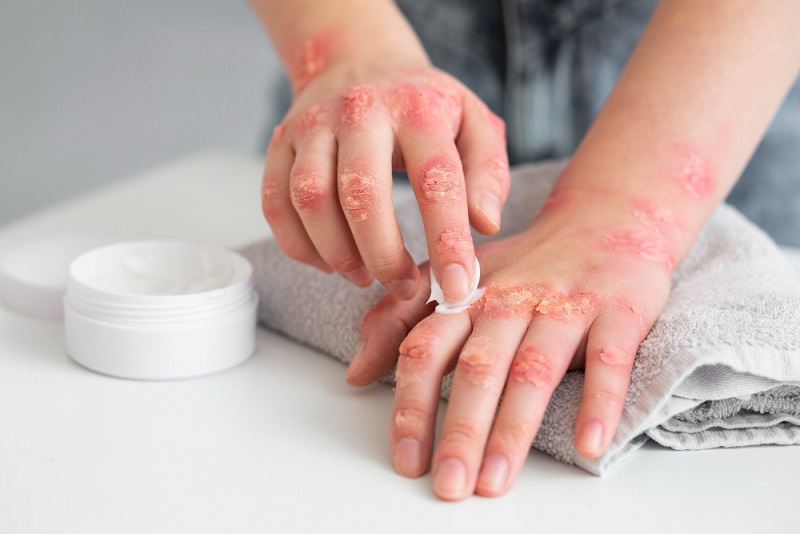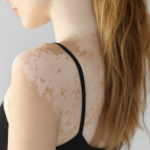A skin rash is a visible change in the texture or color of the skin that may appear red, itchy, bumpy, scaly, or blistered. It can occur anywhere on the body and can be caused by various factors such as allergies, infections, autoimmune disorders, or medication reactions.
Rashes can range in severity from mild irritation to a serious medical condition. They can be acute, meaning they occur suddenly and usually resolve within a few weeks, or chronic, meaning they persist for a more extended period.
Identifying the cause of the rash is crucial to treat it properly. For example, if you develop a rash that is painful, persistent, or accompanied by other symptoms, such as fever or difficulty breathing, it is vital to seek medical attention.
What are the types of skin rashes?
Skin rashes can vary significantly in appearance and cause. Common types of skin rashes include:
1.Eczema
This is a common condition that causes red, itchy patches of skin to develop on the neck, hands, or other areas of the body. In severe cases, eczema can also lead to cracking, blistering, and skin bleeding.
2.Psoriasis
This is a type of rash that causes red or silvery scaly patches to appear on the skin. In some cases, these patches can be itchy or painful.
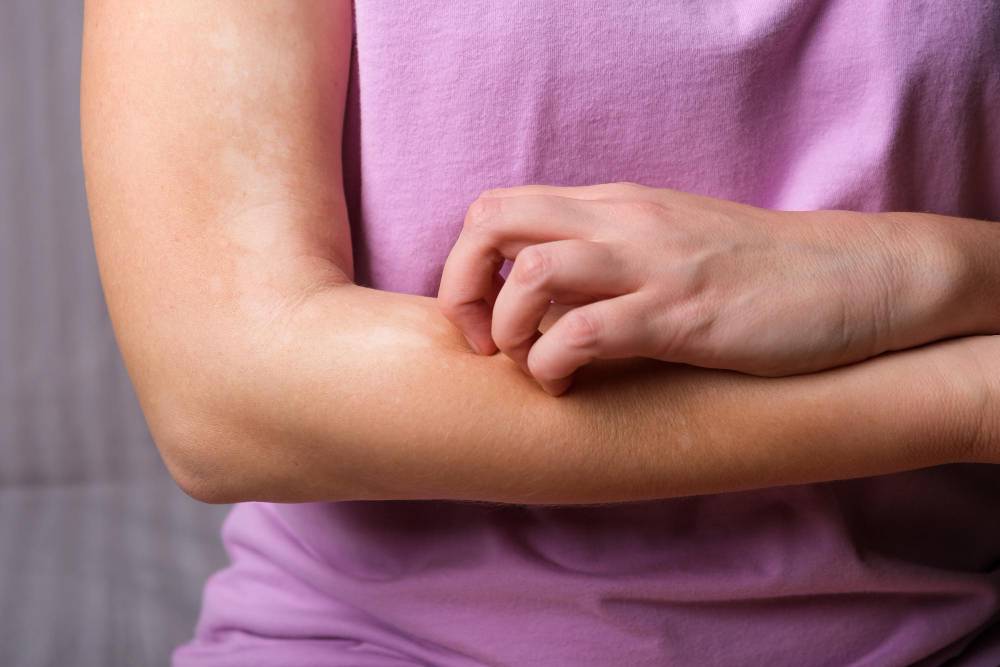
3. Contact Dermatitis
This occurs when the skin reacts to contact with certain substances such as latex, metals, cosmetics, poison ivy/oak plants, and perfumes. It is often accompanied by swelling and itching in the affected area.
4. Rosacea
This chronic condition causes redness and visible blood vessels in the face. If left untreated, it can also cause bumps and pimples on the face as well as thickening of the skin.
5. Hives
This condition is characterized by red, itchy welts that can form anywhere on the body. They often form in response to an allergic reaction or a virus and can be very uncomfortable.
6. Fungal Infections
These infections are usually caused by certain types of fungus that get into the skin through cuts or other open areas. They appear as circular patches with a scaly texture and can cause itching, burning, or soreness in the affected area.
7. Shingles
This is a viral infection caused by the same virus that causes chickenpox. It causes an itchy rash with small fluid-filled blisters that typically appear in a line or stripe on one side of the body.
No matter what type of skin rash you have, you must see your doctor for an accurate diagnosis and treatment plan. If left untreated, some rashes can lead to serious health complications.
What can cause a skin rash?

Many different factors can cause a skin rash. However, some of the most common causes include the following:
- Allergies: A skin rash can be caused by an allergic reaction to certain foods, medications, or other substances.
- Infections: Bacterial, viral, or fungal infections can cause rashes. Examples include chickenpox, shingles, measles, and ringworm.
- Autoimmune disorders: Certain autoimmune disorders like lupus and psoriasis can cause skin rashes.
- Environmental factors: Exposure to irritants or environmental factors such as heat, cold, or sun can cause a rash.
- Contact with plants: Certain plants, such as poison ivy, poison oak, and poison sumac, can cause a skin rash.
- Insect bites or stings: Mosquito bites, bee stings, and other insect bites or stings can cause a skin rash.
- Medications: Some medications can cause an allergic reaction and skin rash.
- Stress can trigger or worsen certain skin conditions, such as eczema.
- Genetic factors: Certain genetic conditions, such as ichthyosis or epidermolysis bullosa, can cause skin rashes.
It is essential to identify the cause of the skin rash to treat it properly. If you are experiencing a skin rash that is painful, persistent, or accompanied by other symptoms, such as fever or difficulty breathing, it is crucial to seek medical attention.
What is the fastest way to get rid of a skin rash?
The most important step to take when dealing with a skin rash is to make an appointment with your doctor. Your doctor can look at the rash and determine what may be causing it. Depending on the cause, your doctor may recommend over-the-counter treatments or prescription medications. In addition, your doctor will be able to give you advice about which lifestyle changes might help relieve any itching or discomfort.
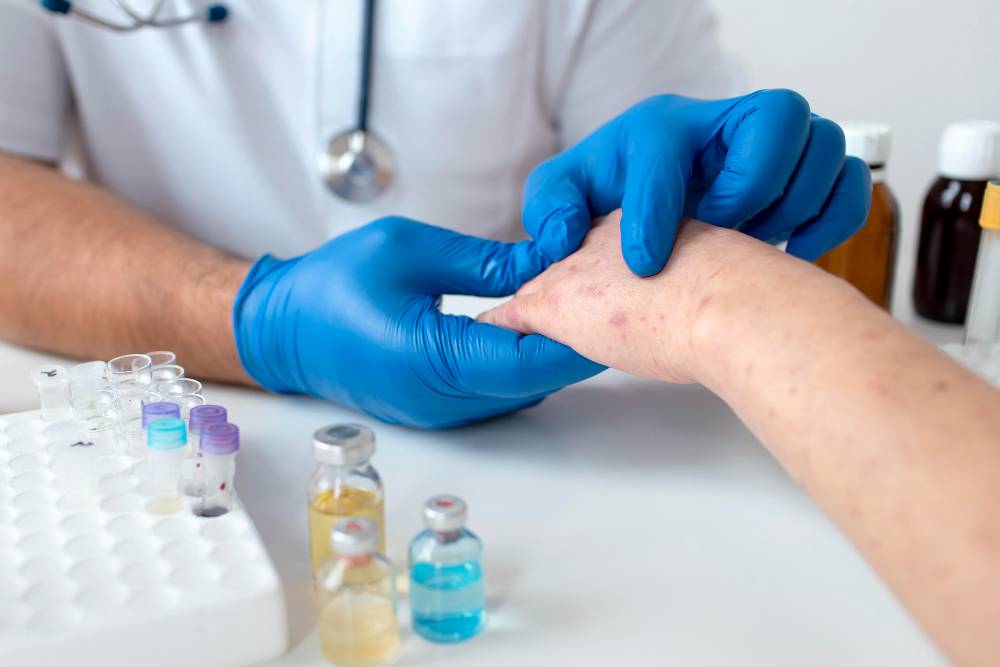
It is crucial to avoid scratching or rubbing the area to eliminate a skin rash as quickly as possible. Applying cold compresses can help reduce symptoms, while topical creams or ointments containing ingredients like aloe vera, hydrocortisone, or calamine lotion may relieve itching and irritation.
If you have a rash that does not go away after several days or is accompanied by other symptoms such as fever, fatigue, or swollen lymph nodes, follow up immediately with your doctor. They may need to conduct further tests to make an accurate diagnosis and provide the best treatment plan for your case. It is important to note that some skin conditions can take weeks or months to resolve completely. In these cases, it is essential to keep following your doctor’s advice and take any prescription medications as directed. Following these steps can eliminate your skin rash as quickly and effectively as possible.
When to worry about a rash in adults
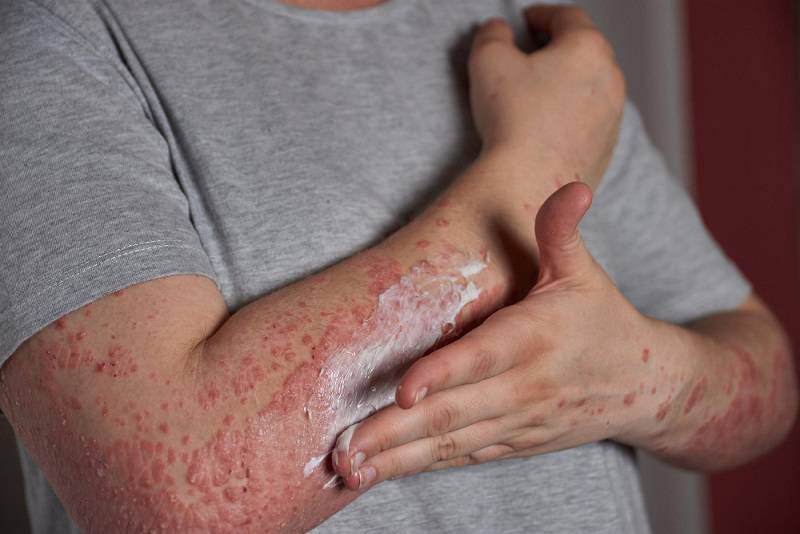
Some certain signs and symptoms indicate that a skin rash in adults may be serious and require medical attention. Here are some of the critical warning signs to look out for:
- Painful rash: If it is painful or causes discomfort, it may indicate a more serious underlying condition.
- Fever: A rash accompanied by a fever may be a sign of a bacterial or viral infection that requires medical attention.
- Rapidly spreading rash: If the rash spreads quickly or covers a large area of the body, it may indicate a severe allergic reaction or infection.
- Difficulty breathing: If the rash is accompanied by difficulty breathing, it could indicate a severe allergic reaction and immediate medical attention is needed.
- Blistering or peeling skin: If the rash is causing blistering or peeling, it may be a sign of a more serious underlying condition, such as a drug reaction or a severe infection.
- Rash in sensitive areas: If the rash is located in sensitive areas, such as the genitals or around the eyes, it may require medical attention to avoid complications.
- Chronic rash: If the rash persists for an extended period or continues to recur despite treatment, it may indicate an underlying medical condition.
Best skin rashes treatment centre in barrie
If you experience any of these symptoms along with a rash, it is important to seek medical attention. In general, seeking medical advice is always necessary if you are concerned about a rash or any lesion which is causing significant discomfort.
Ask your family doctor to send a referral to SimcoDerm Medical and Surgical Dermatology Centre in Barrie to diagnose and treat your rash and other skin conditions. Our dermatology clinic offers services to patients of all ages, from pediatric to geriatric. Our team of experienced professionals can help diagnose skin conditions and provide tailored treatments for your individual skin needs.
We offer many services, including diagnosing, treating, and preventing skin diseases such as acne, psoriasis, eczema, and rosacea.

